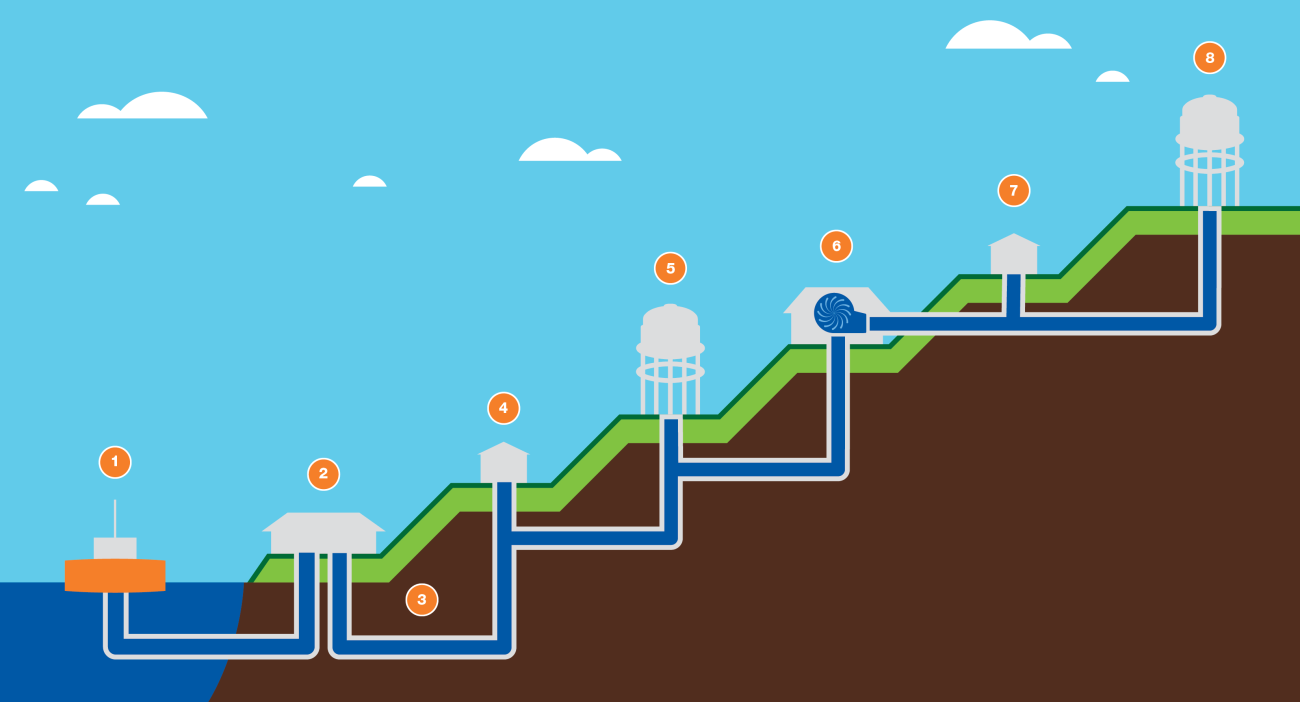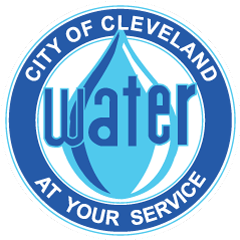Water Distribution
The Water Treatment Plants are where we make water safe to drink, but the distribution system is how we reliably deliver quality water to homes and businesses located throughout our 640-square-mile service area. Because our service area is so large, Cleveland Water has an extensive distribution system – 5 primary pump stations, 12 secondary pump stations, 21 towers and tanks, and nearly 5,300 miles of underground pipes known as water mains – designed to deliver water throughout our service area.

Water Distribution Process
Crib & Raw Water Intake
Cribs on Lake Erie pull raw water into treatment plants via intake tunnels.
Water Treatment Plant
Water is filtered and disinfected at the treatment plant and prepared for distribution via large, on-site pumps.
Drinking Water Distribution
Water flows to tanks and towers as well as to pumps that will distribute water to higher-elevation tanks and towers.
Homes & Businesses Near Lake Erie
Homes and businesses near Lake Erie are at similar elevations to the raw water, requiring less pumping for water to be delivered.
Towers & Tanks
Towers and tanks help maintain water pressure by using gravity to pull water down through mains from higher elevations.
Secondary Pumps
Secondary pumps help deliver water farther and higher into the service area.
Homes & Businesses Farther From Lake Erie
Homes and businesses farther from Lake Erie tend to be at higher elevations requiring the help of strategically placed pumps, towers, and tanks.
More Towers & Tanks
In addition to maintaining water pressure, tanks and towers act as supply sources, preventing service disruptions.
In general, the elevation of Northeast Ohio increases as you move farther from Lake Erie. Because our plants are situated close to Lake Erie, we have to fight gravity to push water uphill to customers located away from the Lake. The large pumps located at each of our four water treatment plants can only push water to a certain elevation before water pressure drops too low. If the pressure in the system drops too low, customers may experience water shortages and decreased pressure in their home and, in some cases, water quality problems.
To combat this, we use a combination of pumps, towers, and storage tanks. Pumps help push water deeper and higher into our service area. Each time we have to use another set of pumps, we create a new pressure zone. Because Cleveland Water’s service area is so large, our distribution system has four major pressure zones. These pressure zones determine the water rates a customer pays. The number of times we have to pump the water to deliver it to your home or business determines how much you pay for water.
Storage tanks and towers help maintain water pressure within a pressure zone by releasing water into the underground water mains from a higher elevation. When customer demand for water is high, water flows from the tower or tank into the distribution system to make sure there is enough water available at a high-enough pressure to meet our customers' expectations. Additionally, tanks and towers act as supply sources, preventing service disruptions when there are power trips or power outages at a pump station.
